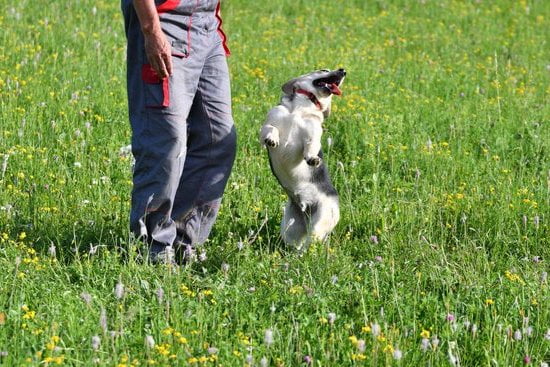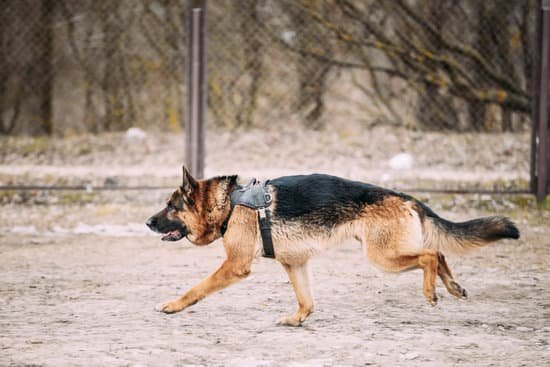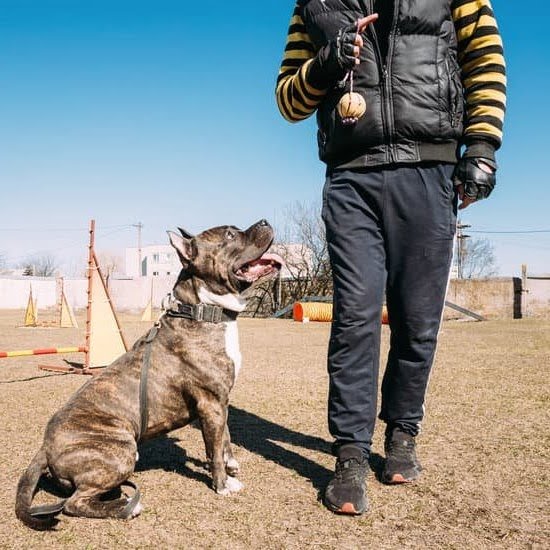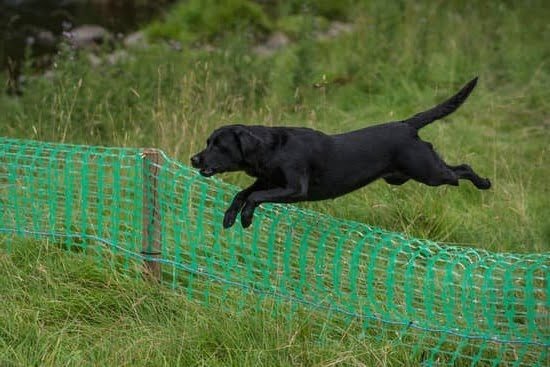Training your dog to ask to go out is an essential aspect of pet ownership. It not only prevents accidents in the house but also establishes a clear line of communication between you and your furry friend. In this article, we will explore the various techniques and strategies for effectively teaching your dog to signal when it’s time to go outside.
Understanding your dog’s body language is crucial in recognizing when they need to go out. By observing their behavior and learning their specific cues, you can establish a routine that meets their needs and prevents accidents in the home. Positive reinforcement is key in encouraging the desired behavior, and using treats and praise can be highly effective in incentivizing your dog to ask for outdoor time.
Additionally, introducing a bell or alternative signal can further enhance your dog’s ability to communicate their needs. Patience and consistency are essential factors in the training process, along with troubleshooting common challenges that may arise along the way. Whether you have a new puppy or an older dog, these techniques can be applied in different environments for real-life success. Stay tuned as we delve into the details of training your dog to ask to go out.
Understanding Your Dog’s Body Language
Dogs communicate their needs and desires mainly through body language. As a responsible pet owner, it is important to familiarize yourself with the signs that indicate when your dog needs to go out. One of the most obvious signs is when your dog starts pacing, whining, or scratching at the door. These are clear indicators that your dog needs to relieve itself and should not be ignored.
Another common sign that your dog needs to go out is when it starts sniffing around or circling a particular area. This behavior is often a precursor to going potty, and recognizing this signal from your dog can help you anticipate its needs and prevent accidents in the house. Additionally, sudden changes in behavior such as restlessness or barking can also be indicative of your dog’s need to go outside.
Aside from these overt signs, it’s essential to pay attention to subtle cues from your dog, such as increased panting, frequent trips back and forth near the door, or even making prolonged eye contact. All these behaviors serve as non-verbal communication from your pet and should not be overlooked.
By understanding and recognizing these body language signals from your dog, you can effectively anticipate its need to go out and begin incorporating the training techniques necessary for teaching it how to ask for bathroom breaks in a more deliberate manner. This will not only enhance communication between you and your pet but also create a more comfortable environment for both of you.
Establishing a Routine
In addition to regular bathroom breaks, it’s important to establish a routine for feeding and water intake. By controlling these aspects of your dog’s daily life, you can better predict when they will need to go outside. For example, feeding your dog at the same times each day can help you anticipate when they will need a bathroom break. Consistency is key in establishing this routine, so try to stick to the same schedule every day.
Another important part of the routine is providing opportunities for play and exercise. Physical activity can help regulate your dog’s bodily functions and encourage them to eliminate waste. By incorporating regular playtime into your daily routine, you can promote healthy habits and make it easier for your dog to ask to go out when they need to relieve themselves.
| Key Points | Details |
|---|---|
| Consistent schedule | Regular bathroom breaks at the same times every day |
| Control feeding and water intake | Predictable meal times for better bathroom break anticipation |
| Incorporate playtime and exercise | Promote healthy habits and regulate bodily functions through physical activity |
Positive Reinforcement
Understanding the Power of Positive Reinforcement
Positive reinforcement is a powerful tool in training your dog to ask to go out. When your dog exhibits the desired behavior, such as sitting by the door or using a bell to signal their need to go outside, it’s important to immediately reward them with treats and praise. This positive association will strengthen the behavior and encourage your dog to continue asking to go out in the future.
Choosing the Right Treats
When using treats as a form of positive reinforcement, it’s essential to choose treats that are especially enticing for your dog. Small, bite-sized treats that can be quickly consumed are often the most effective. Additionally, consider using high-value treats such as small pieces of cooked chicken or cheese, as these can be particularly motivating for your dog.
Consistency and Timing in Praise
In addition to using treats, verbal praise and affection are also important components of positive reinforcement. When your dog successfully asks to go out, immediately offer enthusiastic praise and petting. The timing of the praise is crucial – it should occur within seconds of your dog exhibiting the desired behavior in order to effectively reinforce it. Consistency in both treat giving and praise will help solidify your dog’s understanding of what is considered desirable behavior.
Teaching Your Dog to Communicate
When it comes to training your dog to ask to go out, introducing a bell or alternative signal can be an effective method. This technique provides your dog with a clear and consistent way to communicate their needs, ultimately reducing accidents and fostering a stronger bond between you and your furry friend. Here are some steps to consider when introducing a bell or alternative signal:
- Choose the Signal: Decide on the specific signal you want your dog to use when they need to go out. This could be a bell by the door, a pawing action, or even barking at a specific location.
- Association: Once you’ve chosen the signal, begin associating it with the act of going outside. For example, every time you take your dog out, encourage them to interact with the bell or perform the desired action before opening the door.
- Consistent Reinforcement: Use positive reinforcement such as treats and praise whenever your dog successfully uses the signal to indicate their need to go out. This will help solidify the association in their mind.
Implementing this method requires patience and consistency. Not all dogs will immediately understand how to use the signal, so it’s important to remain persistent and keep working on it over time.
By establishing this clear form of communication, both you and your dog will benefit from an improved understanding of each other’s needs, leading to a more harmonious living environment for everyone involved. Remember that every dog is different, so be patient as you work together to master this new form of communication.
Patience and Consistency
Training a dog to ask to go out requires patience and consistency from the pet owner. Dogs, like humans, need time to learn and adapt to new behaviors, so it’s important for owners to remain patient throughout the training process. Consistency is also key in reinforcing the desired behavior in your pet. By being consistent with your commands, rewards, and schedule, you can effectively teach your dog to ask to go out.
One way to achieve consistency is by establishing a routine for your dog. By taking them out at the same times every day, they will begin to understand when it’s time to go outside and use the bathroom. Additionally, using positive reinforcement such as treats or praise when your dog successfully asks to go out will help solidify this behavior in their minds. Over time, they will come to associate asking to go out with a positive outcome.
It’s also essential for pet owners not to lose patience when their dogs make mistakes during the training process. Accidents are bound to happen as part of the learning curve, but it’s important not to scold or punish your pet for these mishaps.
Instead, continue with the training regimen and focus on rewarding correct behaviors rather than punishing incorrect ones. This will create a safe and welcoming environment that encourages learning and reduces anxiety for both pet and owner.
| Factors | Importance |
|---|---|
| Patience | Allows time for dogs to learn new behaviors. |
| Consistency | Reinforces desired behaviors through repetition. |
| Routine | Establishes clear expectations for dogs. |
| Positive Reinforcement | Motivates dogs through rewards. |
Troubleshooting
Training your dog to ask to go out is a process that requires patience, consistency, and understanding. While it can be a rewarding experience, there are common challenges that many dog owners face during this training process. Here are some of the most common issues and how to address them:
1. **Accidents in the House**: It’s normal for dogs to have accidents while they are still learning to ask to go out. If your dog has an accident in the house, it’s important not to scold or punish them as this can cause fear and anxiety. Instead, clean up the mess quickly and continue with the training process. Use positive reinforcement when your dog successfully asks to go out to help reinforce the desired behavior.
2. **Ignoring the Signal**: Some dogs may take longer to understand or respond to the signal you have introduced for them to indicate that they need to go out. If this is the case, continue practicing with your dog and be consistent in using the signal every time you take them outside. Eventually, they will make the connection between the signal and going outside.
3. **Inconsistency in Routine**: Dogs thrive on routine, so inconsistencies in their schedule can disrupt their training progress. Make sure that everyone in your household is on board with the training plan and follows the same routine for taking your dog outside.
By addressing these common challenges with patience and positive reinforcement, you can overcome obstacles in training your dog to ask to go out and create a strong bond based on effective communication and understanding.
Real-Life Application
Home Environment
Training your dog to ask to go out in the home environment is essential for a peaceful and clean living space. Establishing a routine and using positive reinforcement are great starting points. To further solidify this training, consider placing a bell or alternative signal by the door that leads outside. This physical signal will help your dog understand where they need to go when they need to go out.
Public Places
Taking your dog to public places requires an extra level of training, as there are more distractions and variables at play. When venturing out with your furry friend, it’s important to stay consistent with the established routine from home. Bringing along their bell or alternative signal can also help them communicate their needs in unfamiliar environments. Additionally, keep plenty of treats on hand to reinforce positive behavior while out and about.
Traveling
Whether you’re driving in the car or staying in a hotel, it’s important to continue reinforcing your dog’s training while traveling. Be sure to stick to the established routine as much as possible, including regular potty breaks at familiar intervals. If staying at a hotel, be proactive by asking about designated pet relief areas nearby and plan accordingly. With patience and consistency, your dog will learn to transfer their asking habits from home to various travel destinations.
Conclusion
In conclusion, training your dog to ask to go out has numerous benefits for both you and your furry companion. By understanding your dog’s body language and establishing a routine, you can successfully train them to communicate their need to go outside. This not only prevents accidents in the house but also strengthens the bond between you and your dog as you work together towards a common goal.
Additionally, positive reinforcement, such as using treats and praise, can encourage the desired behavior of asking to go out. Introducing a bell or alternative signal is another effective way to teach your dog to communicate their needs. Through patience and consistency, you can overcome common challenges in the training process and ensure that your dog understands what is expected of them.
Ultimately, training your dog to ask to go out not only leads to a well-behaved pet but also fosters a deeper connection between you and your furry friend. The sense of accomplishment and understanding that comes from successful training will enhance the bond you share with your dog, creating a happier and more harmonious living environment for both of you.
So take the time to invest in this important aspect of your relationship with your pet – it will be well worth it in the long run.
Frequently Asked Questions
How Do I Train My Dog to Tell Me He Needs to Go Outside?
Training your dog to communicate when it needs to go outside can be done through consistent and patient efforts. Start by paying close attention to your dog’s behavior and signals indicating that it needs to go out, such as whining, pacing, or scratching at the door.
Once you observe these signs, take your dog outside immediately. Over time, your dog will learn to associate these behaviors with going outside, and you can reinforce this by giving positive reinforcement whenever it successfully communicates its need to go out.
Why Does My Dog Not Ask to Go Out?
There are several reasons why a dog may not ask to go out. It could be due to lack of proper training, medical issues that make it difficult for the dog to communicate its needs, or anxiety-related behavior.
It’s important to address any underlying issues and ensure that your dog is comfortable communicating with you. Consistent training and positive reinforcement can help encourage your dog to start asking to go out when it needs to.
How Do I Get My Stubborn Dog to Pee Outside?
Dealing with a stubborn dog when it comes to peeing outside requires patience and understanding. Start by establishing a routine for bathroom breaks and take your dog out at regular intervals. When outside, use positive reinforcement such as treats or praise when your dog successfully pees outdoors.
Be consistent and avoid punishing your dog for accidents indoors, as this can create more anxiety around the issue. With time and persistence, even a stubborn dog can be trained to pee outside reliably.

Welcome to the blog! I am a professional dog trainer and have been working with dogs for many years. In this blog, I will be discussing various topics related to dog training, including tips, tricks, and advice. I hope you find this information helpful and informative. Thanks for reading!





